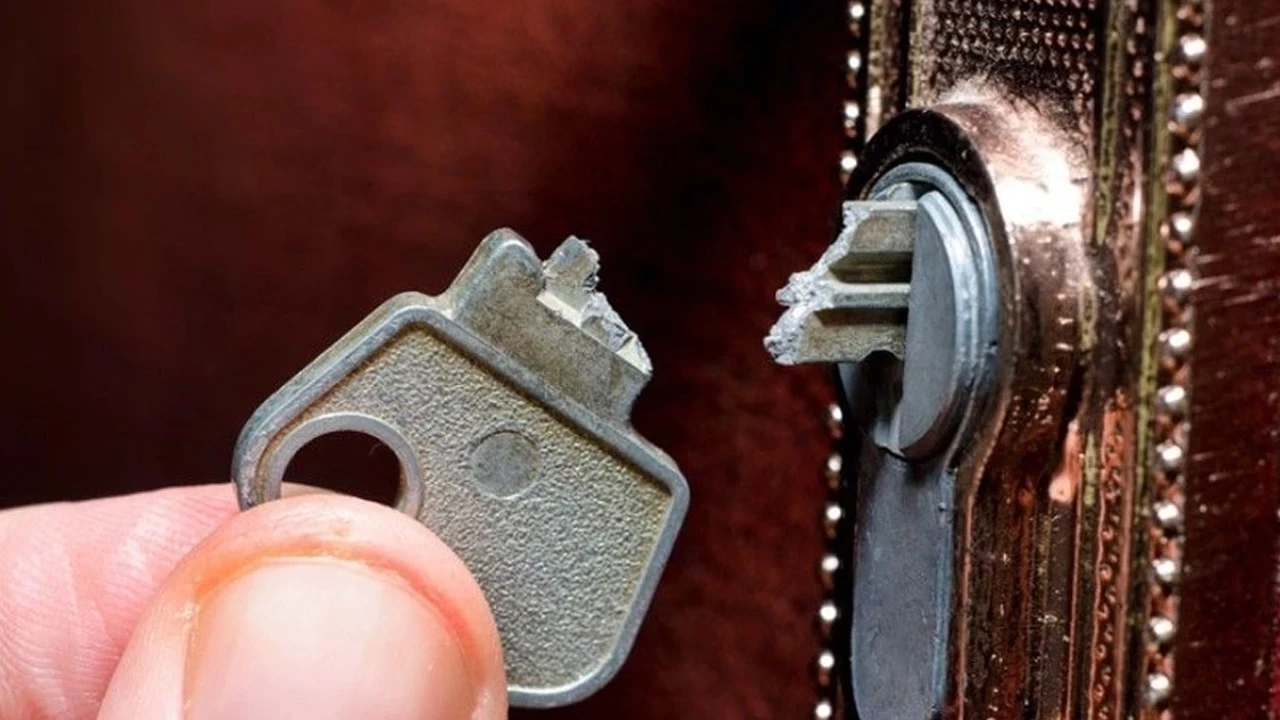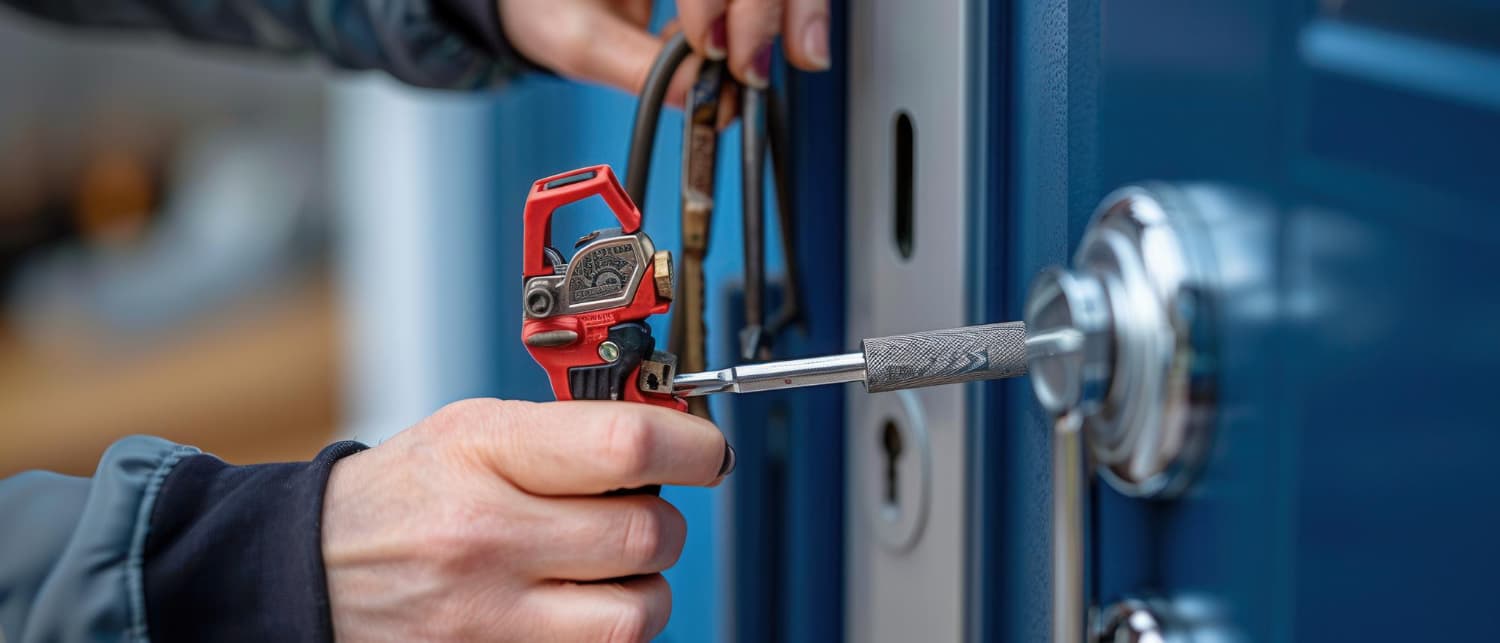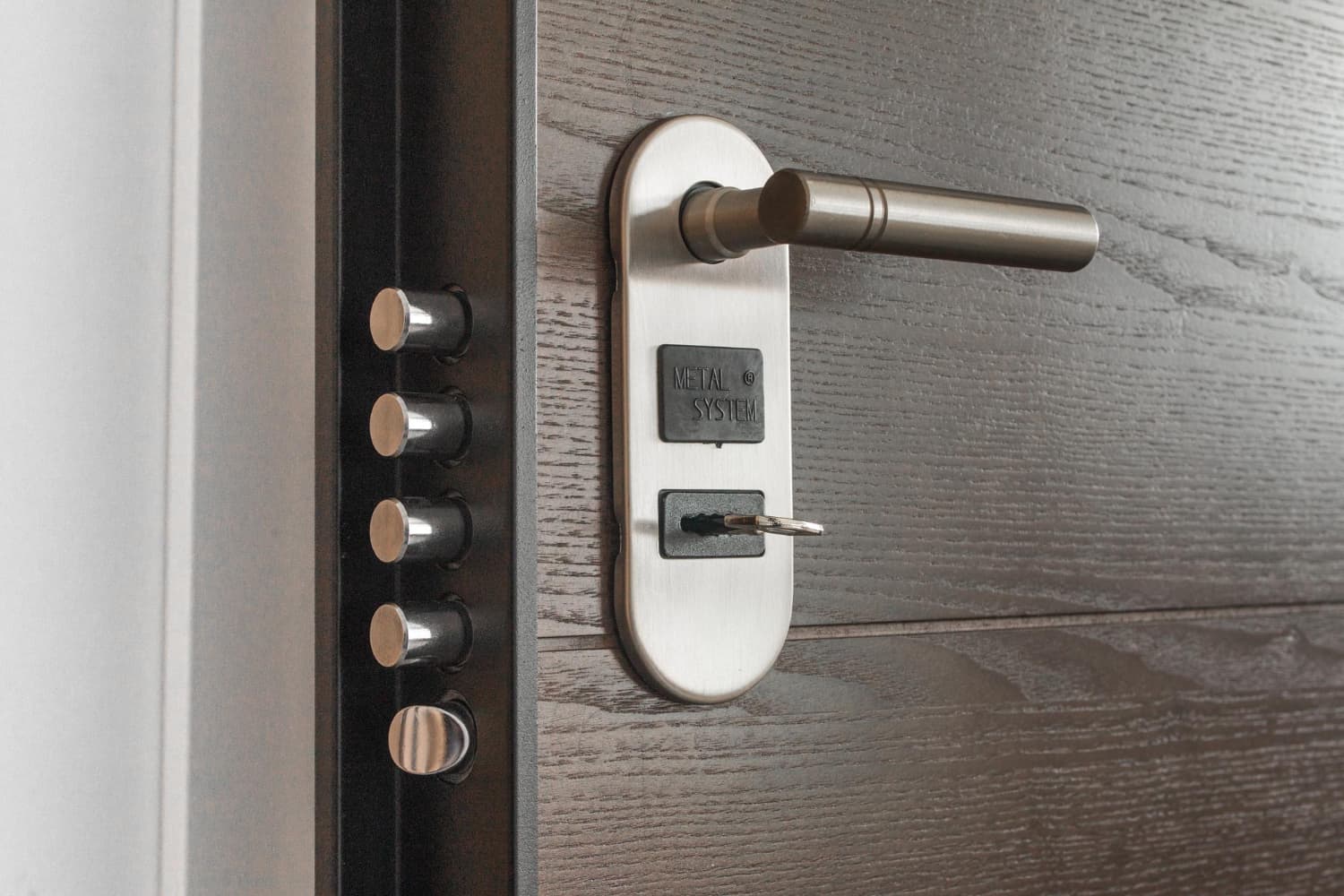It’s a moment of pure frustration: you’re inserting or turning your key, you feel a slight resistance, and then… snap. The key breaks, leaving a piece lodged deep inside the lock. Now you’re stuck on the wrong side of the door with a useless key fob in your hand.
Before you panic or reach for the pliers, take a deep breath. How you handle the next few minutes is crucial. The wrong move can push the broken piece deeper or damage the lock mechanism, turning a simple extraction into a full lock replacement.
Why Do Keys Break in the Lock?
Understanding the cause can help you prevent it in the future:
-
Wear and Tear: Over time, keys weaken. Constant use creates stress points, especially where the blade meets the head. An old, worn-out key is the most common culprit.
-
A Faulty Lock: If the lock mechanism itself is stiff, rusty, or misaligned, it puts extra pressure on the key every time you turn it. The key becomes the weakest link and gives way.
-
Low-Quality Key Copies: Cheap, poorly cut duplicates from uncalibrated kiosk machines are often made from soft, inferior metal that can’t handle the torque of turning a lock.
-
Excessive Force: If the key was already difficult to turn and you applied too much force instead of investigating why, the key was likely to snap.
Step 1: What to Do Immediately (The Dos)
Your goal is to avoid pushing the broken piece further in. Stay calm and follow these steps:
-
Don’t Panic: Take a deep breath. Rushing leads to mistakes.
-
Assess the Situation: How much of the key is sticking out? If there’s even a millimeter of key protruding, you have a good chance of removing it yourself.
-
Apply Lubricant (Optional but Helpful): A quick, short burst of a dry graphite lubricant or a silicone-based spray into the keyhole can help loosen the fragment and make it easier to grab. Avoid WD-40 as it can gum up later.
-
Use the Right Tools (If You Have Them):
-
Needle-Nose Pliers or Tweezers: If the key is protruding, try to grip it firmly with the tips of the pliers. Pull straight out with steady, gentle pressure. Do not wiggle or twist, as this might break it further.
-
A Broken Key Extractor Tool: This is a specialized, inexpensive tool designed for locksmiths. It has tiny hooks that can slide down the side of the key fragment, hook onto its teeth, and pull it out. This is the most effective DIY method if you have one.
-
Step 2: What to Avoid at All Costs (The Don’ts)
This is arguably more important than what you should do. Avoid these common mistakes:
-
DON’T use superglue. This is a famous internet «hack» that almost always fails. You risk gluing the key fragment permanently to the lock pins, creating a disastrous and expensive repair.
-
DON’T poke and prod with random objects. Using a paperclip, knife, or screwdriver blindly can push the broken piece deeper into the lock or scratch and misalign the delicate pins inside.
-
DON’T try to turn the broken piece. You no longer have the leverage to turn it correctly, and trying will likely jam it in a worse position.
-
DON’T remove the entire lock yourself. Unless you are very handy, attempting to disassemble the door lock can lead to losing small parts and causing more damage.
When to Put Down the Tools and Call a Professional Locksmith
If the broken key is flush with the lock or deep inside, it’s time to call a pro. You should also call a locksmith if:
-
Your DIY attempts have failed.
-
You don’t feel comfortable doing it yourself.
-
The lock was already problematic before the key broke.
-
It’s an emergency, and you need to get through the door quickly.
Why a professional is the right call: A certified locksmith has the specialized tools (like precision extractors and scope cameras) and expertise to remove the broken key quickly and without damaging the lock cylinder. In most cases, they can have you back inside with a functioning lock in minutes, often without needing to replace the entire lock.
How to Prevent It from Happening Again
-
Replace Worn Keys: If your key is bent, warped, or shows signs of wear, get a new one cut by a professional locksmith using high-quality blanks.
-
Maintain Your Locks: A stiff lock is a key-breaker. Regularly clean and lubricate your locks with a dry graphite or silicone spray to keep them operating smoothly.
-
Address Problems Early: If your key becomes hard to turn, don’t force it! This is a sign the lock needs maintenance or repair. Investigate the cause immediately.
We’re Here for Your Lock Emergencies
A broken key is a common but stressful problem. While a careful DIY approach can sometimes work, the safest and most reliable solution is to call a professional.
Our team specializes in non-destructive key extraction. We arrive quickly with the right tools and expertise to remove the broken piece and get your lock working again, often on the spot without any damage.
Don’t risk turning a simple fix into a major repair. If your key breaks, call the pros at [Your Locksmith Service Name] immediately at (858) 430-7494. We’re here 24/7 to help!




